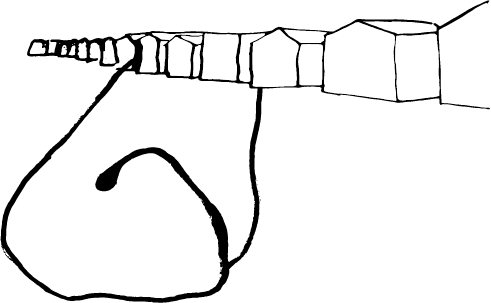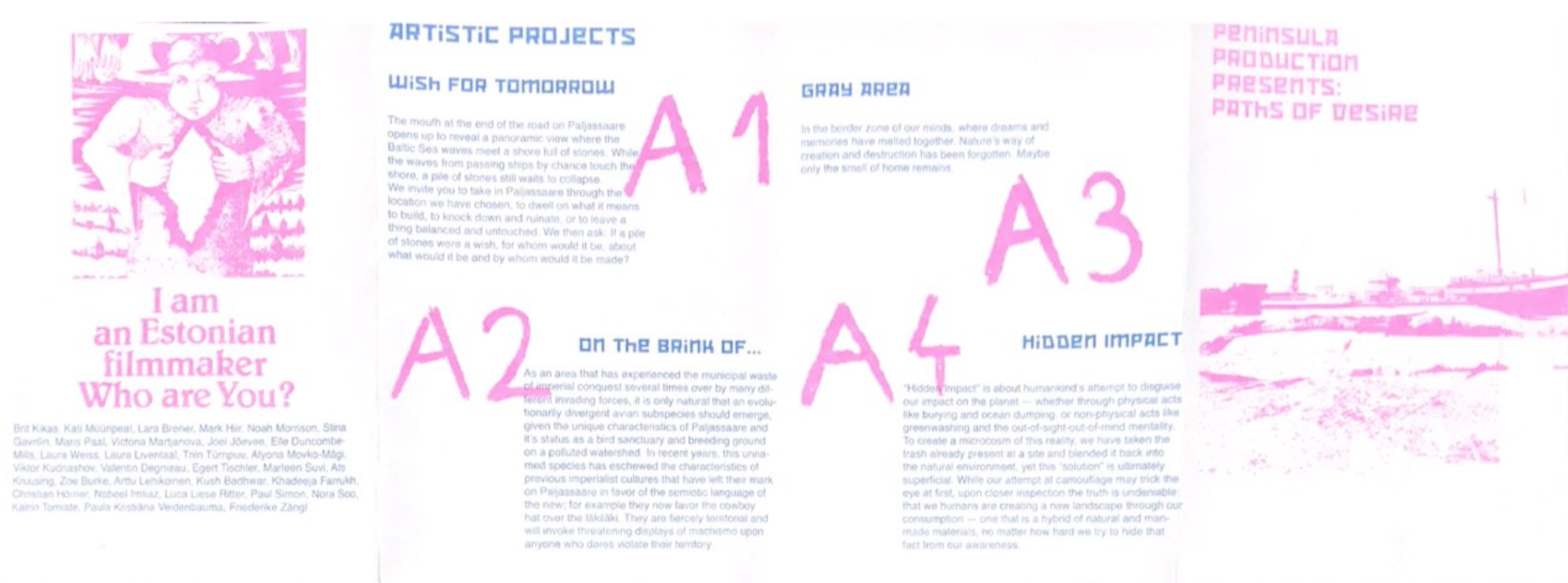Peninsula Production Presents:
Paths of Desire
Mid-Term Critique



The first half of the studio was about collecting information and deepening our knowledge about Paljassaare through extensive research on many different layers, topics and scales. Our main task was to scan every possible resource, explore Paljassaare on site and read ourselves through the city's archives to uncover connecting narratives and logics. The mid-term public output took the shape of a guided bike tour, for which we had to refine our knowledge in order to share it with others. For this public event we, as organizers and guides, collaborated with students from EKA’s Master of Contemporary Art (MACA) program, presenting mixed formats ranging from talks to installations to poetry readings to showcase the insights we gained through our research. During the tour, we presented an overview of Paljassaare through its political history and the future planned on site, introducing cases like Ecobay and Wolfscape or pointing out the ecological relevance of the Tallinna Vesi sludge fields.
We organized the tour also for the participants of the EnviroAnt Network for Environment & Anthropology meeting taking place in Tallinn. Due to these multilayered collaborative preconditions and different agendas involved, the planning process proved quite challenging. Not only did we want to equally include the MACA students' interventions in Paljassaare and give everyone sufficient time to explore the works on their respective sites, but present the conference guests with insightful input. Our main challenge was to find a balance between duration of the tour, length of the route and complexity of our own contributions to it. All this played its part in bringing out critical questions about our own involvement with Paljassare and our positionality in terms of producing the tour. The difficult planning process made us ask ourselves: Who are we organizing this tour for? What is it that we want to achieve here?
After the tour, two students, one from Urban Studies and one from Contemporary Art, got together to reflect on their experience of the process of collaboration and production. You can find their conversation here.
In search of an overarching theme for the event, we came up with the idea of setting it up around a simple but important fact: Involvement with urban spaces generally alters and thus perpetually recreates them. Paljassaare Production Presents: Paths of Desire represents our take on developing this view as the framing of a public event. Filming became both metaphor and method when we, Paul and Christian, decided to document the event with video cameras. Recording as a performative act was intended to create an atmosphere of critical awareness about our presence and actions in Paljassaare. The materials collected through this performance carried the critical spirit and performative intention of its production. The artifact further emphasizes the question of our positionality as urban researchers and organizers of tours by asking about our intentions, taking the perspective of a possible outside observer. The sequence of the different parts of the footage was generated by arbitrary telephone numbers of inhabitants and businesses in Paljassaare, generating repetitions and random combinations as well as seemingly meaningful but rarely intended interactions of spoken narration and moving image. The assemblage of the collected recordings circles back to the question of positionality and what part our student projects play in economies of knowledge. The motif of extraction is emphasized, tracing connections between its role as a feature of capitalist production and the way we work with places like the Paljassaare peninsula. As urbanists, we search these areas for (immaterial) resources that we can use in order to fuel our thought processes, get inspired by conditions we explore, or analyse their meaning and impact. We have to face the fact that these actions recreate the places we engage with and pay close attention to how our involvement affects these places.
by Christian Hörner




